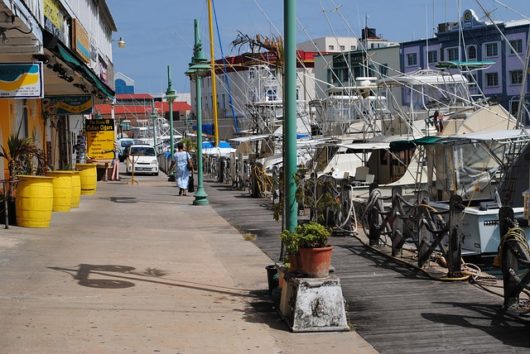Most Interesting Facts About Living Conditions in Barbados

Barbados, known famously as a tropical destination, is one of the most prosperous of the Caribbean Islands despite the increase of its total poverty rate which now sits at 17.21 percent compared to 15 percent in 2010.
The country used to rely economically on sugar exports, but now heavily relies on tourism and finance. Many resorts have had success in Barbados as the white sand beaches, tropical vegetation, warm weather and bright blue water welcome a reputation as a relaxing vacation getaway. However, away from the resorts and tourism, living conditions do not portray the same picture. Below are the top 10 facts about living conditions in Barbados.
Top 10 Facts About Living Conditions in Barbados
- The most expensive properties are located on the west coast of Barbados, which heavily caters to extremely wealthy tourists. A three-bedroom house rents for around $1,500-$5,000 a month, while the south coast of Barbados rent runs for about $1,350 a month. Fifty-four percent of households own the property without a mortgage, and as a result, the Barbados housing market remains weak. Residential property prices in Barbados, especially in the high-end market, are still about 29 percent below the peak levels seen before the global crisis.
- The reported overall poverty rate in 2016 was 17.21 percent. The St. John Parish — which caters mainly towards local inhabitants — was reported as the poorest parish on the island as it had a 15.56 percent increase in poverty since 2010. In Barbados, 3.39 percent of the population do not receive their minimum caloric requirement; in terms of early childhood development, 4 percent of children living in extreme poverty and aged 0-5 were reported as stunted in growth. These numbers were calculated in comparison to the international average of anthropometric of height and weight for children in this age group.
- Sixty percent of households have outer walls with masonry and 51 percent have roofs built from corrugated metal sheets that provide sturdy protection against weather. Eighty-eight percent of households have WC connected to a well system and 96 percent have water pipelines. Most homes are equipped with modern amenities.
- The 2017 statistics on crime rates in Barbados reported that the country had 11 murders, 84 robberies and 29 shootings per every 100,000 people. Drug-related crimes are the most prevalent type of crime in Barbados, with residential burglaries coming in at a close second. The population of Barbados was reported at 285,719 in 2017, which puts into perspective how large the issue of drug-related crime and residential burglary is within the nation.
- In 2012, the Barbados government enacted a poverty intervention plan called the Implementation Stabilization Enablement and Empowerment (ISEE) Bridge Program. The program was created in order to address intergenerational extreme poverty and aid welfare at the household level. Each member of the household in need receives aid which will eventually reduce their dependency on the government. The goal of this program is to prevent extreme poverty from continuing in the next generation and release families from the cycle of poverty.
- The Barbados Government Information Service (BGIS) is the official communications arm of the Barbados government. This department is responsible for the dissemination of public information to the various news media and the general public.
- In 2015, the Inter-American Development Bank provided $10 million to the government of Barbados to carry out the ‘Strengthening Human and Social Development in Barbados’ project. The project will last for 5 years and sets out to aid unemployment, youth from the ages of 16-30 and retrenched workers. This project will strengthen the active labor market policy, enhance information sharing capacity through a new management information system, and expand the number of households aided by the ISEE Bridge Project.
- It is not often that the words ‘poverty’ and ‘Barbados’ are used in the same sentence. The island enjoys a high ranking on the UNDP Human Development Index, and according to a Barbados Country Assessment of Living Conditions Report, it ranks in the top 50 countries in the world.
- Teen motherhood in Barbados — measured for women who had children at or below the age of 19 — sat at 25 percent for women 30 years old or older. However, data shows that as education levels increased for women in Barbados, teen motherhood decreased. The amount of teen motherhood for women in their twenties (a decade or so later) was at about 14 percent.
- In terms of education in Barbados, 97.02 percent of the population attended a formal educational institution, 66 percent had completed secondary education and 32.3 percent obtained higher qualifications. Of the 32.3 percent that continued past secondary education, 13.5 percent pursued vocational/technical training and 18.8 percent pursued tertiary education. In regards to public healthcare, Barbados has 8 accessible polyclinics which provide immunization services and curative acute care for children. A few of the polyclinics also provide dental and eye care; as a whole, these polyclinics provided 87.5 percent of all immunizations in Barbados.
A Nation in Progress
As this list of top 10 facts about living conditions in Barbados reveals, Barbados still has issues to address regarding poverty and living conditions. However, according to Barbados Country Assessment of Living Conditions, Barbados ranked in the top 50 countries in the world, and the Barbados government is active and dedicated in launching social welfare programs and progressing their country.
– Mary Spindler
Photo: Pixabay
